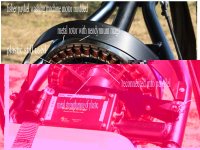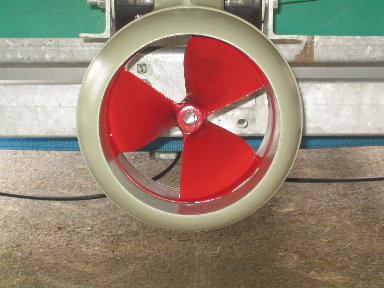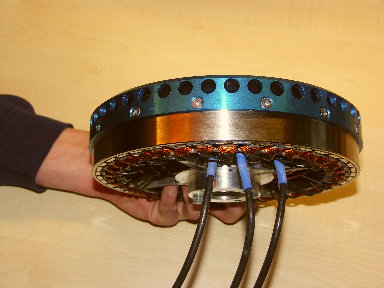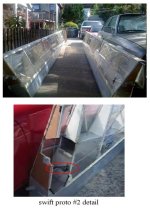just some random thoughts about using brushless dc motors for an aircraft engine
begin with this new design windgen ( flodesign company ma, usa)
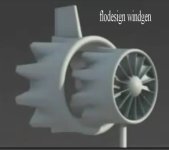
http://www.youtube.com/watch?v=WB5CawKfE2M
they claim 3 to 4 times increase in capturing wind energy ( dont laugh just yet!)
they are using jet engine flow design techniques, there are new design jet engines using basically the same setup
as per pic below ( note the white section is genuine, the rear of motor has been rendered in)
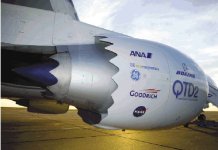
Finally if you adjust an ordinary water hose nosel, you can get large increase in the force of the hose pushing against your hand, buy adjusting how the water exits the hose ( maybe not relevant but same principle to increase thrust).
So the idea is this ( who knows if it would work or not!)
use the windflo design windgen turbine as a basis for an aircraft engine, assuming that it would also act as an efficient thrust motor where the blades are being turned by an elelctric motor. Incorporate into the design aspects of aircraft jet engines ( I'm not sure if there would be any good reasons for trying this, though im guessing compressing the airflow, then expanding it might only be useful where a fuel is being ignited........no idea really on that).
Earlier in this thread someone posted a link to ultralight electric powered craft, it is using the fisher paykel wasing machine motors, they are making metal components to replace the plastic sections, and assume using neodymium mags on the fp rotors), not sure if anyone picked up on that.
So the fp ( fisher paykel) motors are probably a good place to start experimenting with. Though very small dc motors say from computer fans, might also be useful for doing small scale experiments with increasing thrust.
It would be possible to put a series of fp motors on an axle and get very high power motor.
Finally back to the water hose idea, maybe a very small motor and copy how a water hose increases thrust might be an interesting place to start. Its very unlikely I'll do any experimenting with these ideas but thought I would throw it in the mix.








